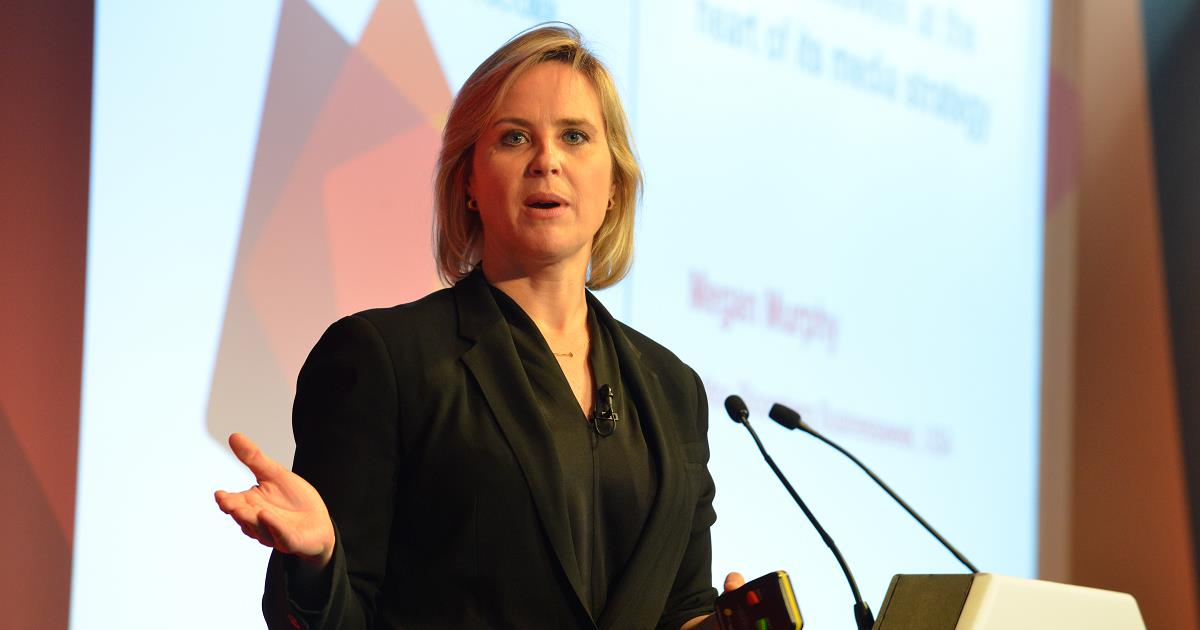How Bloomberg Media is expanding Businessweek’s global footprint

With 2,700 journalists and 250 analysts worldwide, Bloomberg Businessweek is already being distributed in 120 countries. It is considered one of the major media brands followed by business leaders, or which any business leader in the world worth their salt should follow. But for Bloomberg this wasn’t good enough. With it’s vast resources it re-launched in June this year to find a fresh focus, intelligence and provide digital-first access globally.
Editor Megan Murphy told delegates to this year’s FIPP World Congress their main aim was to ensure that Businessweek grew to become a truly global title with premium content, which was digitally smart. They had a two-pronged approach: on the editorial side they wanted to refocus the content, design and reach, while on the business side they implemented a paywall, among other initiatives.
To achieve their editorial goals, said Murphy, they realised they needed a more targeted approach, focussing deeper on business and finance, while also covering news events that shape important world decisions. To be ever-present they needed to invest in digital resources in order to be a digital-first brand which could match the fast pace of leaders in today’s fast-paced world. Finally, they needed to expand their global reach to leverage the full power of Bloomberg Businessweek’s worldwide footprint of on-the-ground reporting.
Murphy described the latter as one of their greatest challenges: the fact that a very large percentage of their audience continued to be from the United States only. “A big part of our push was to expand our brand presence in Europe, Asia, Latin America and India… When we talk about business news, people want to consume content in their own language.”
To achieve this a crucial part of their strategy was that they have already had licensing agreements with media partners in many other parts of the world. This is why they have recently been successful in launching Businessweek in places like Mexico, Poland, China and Middle East where their content is distributed under their brand in partnerships using – typically – 60 per cent international Businessweek content and 40 per cent local content, while also pushing growth in traditional English speaking countries like the UK and Australia.
In terms of digital growth, they have made it a priority to develop their own app and push forward a social media strategy. Apart from unifying design across print and all the digital properties to ensure that the brand was immediately recognisable at any time and in any format, “we wanted to up people’s daily interaction with Businessweek.”
They now push out between ten and twelve distinctive pieces of content on their app daily. “We want to drive people to engage with Businessweek… to have a daily interaction with the brand instead of just a weekly sit back and read experience.”
Despite these relatively new developments, they have not turned their back on what Murphy describes as “fairly antiquated methods” to drive traffic, like email newsletters. She insists that these continue to be important tools to trigger content consumption.
It was also vital for the brand to traverse all major platforms. At the moment their focus is on five:
- Digital, which is a dedicated destination on Bloomberg.com to deliver topical “deep-dive reporting, data, video and infographics”;
- Mobile, which provides a daily stream of news pushes as well as a weekly archive;
- Print, the enhanced book structure “which curates a narrative to match the global news cycle on a weekly basis”;
- Broadcast, a daily themed features offering real-time updates across Bloomberg Television and Audio; and
- Events – live gatherings organised to add colour, insight and perspective from global leaders around the world.
From a revenue perspective – apart from increasing the price of the printed magazine – the most important focus now is to drive their audience past their paywall. “It’s been a key component of our business strategy… We found that as much as 95 per cent of our audience was not engaging past the two article (free content) limit, which meant that that was a natural inflection point for us to put that subscription barrier.” The main aim now is to use apps, social media and email newsletters to drive more and more of their global audience past the paywall.
You can see Megan Murphy’s FIPP Congress presentation here.
More like this
Bloomberg Businessweek overhauls business model with relaunch
Download the FIPP World Congress 2017 speaker presentations
[Video] New FIPP Chairman on industry challenges, opportunities ahead







